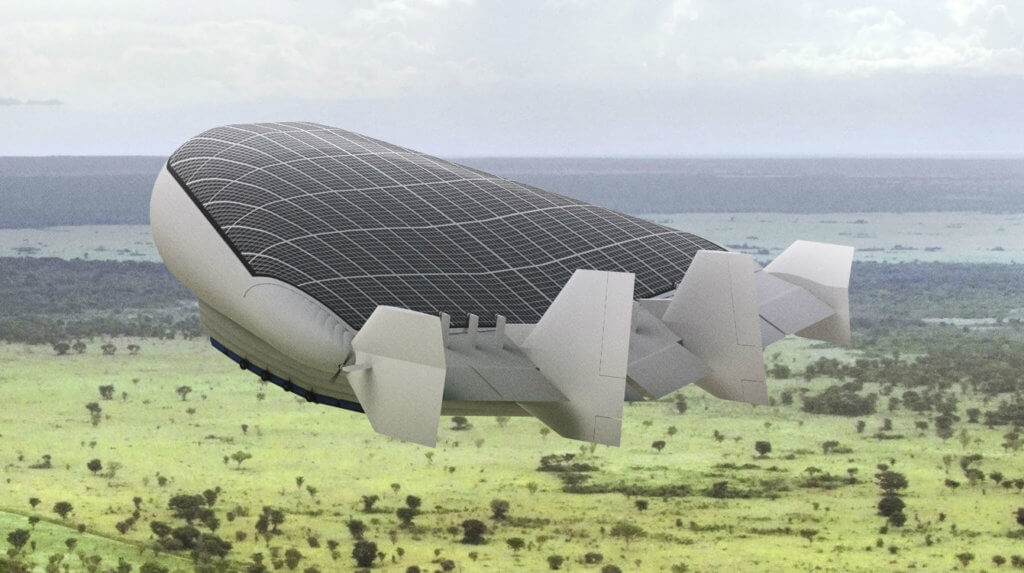Estimated reading time 5 minutes, 18 seconds.
A small Canadian aviation firm is challenging industry giant Lockheed Martin to an ambitious race series that would test and promote the capabilities of hybrid aircraft.

Solar Ship, a Toronto-based manufacturer, hopes to pit its Wolverine aircraft against Lockheed Martin’s LHM-1 airship in two races that would take place in 2018 and 2019.
If all goes according to plan, the first race would start on Canada Day 2018 and would fly 3,500 kilometres from Johannesburg, South Africa, to Kampala, Uganda, in what are seen as near-perfect flying conditions.
The second race would be a more rigorous test, starting on Canada Day 2019 and traveling 22,000 kilometres from the Lockheed Martin facility in Palmdale, Calif., to the Canadian Arctic before crossing the Atlantic Ocean and touching down in Africa.
“A lot of people are confused about what their aircraft does and what our aircraft does, and they’re quite different,” said Jay Godsall, chief executive officer of Solar Ship.
“And so, by putting them both into the same environment and asking them to do some very challenging things, we think that the differences will be pretty clear.”
He described the Wolverine as a “bush plane with buoyancy,” featuring a large delta wing that is 50 metres wide, filled with helium and topped with solar panels that power an electric motor.
“We’re 60 per cent Canadian bush plane and we’re 40 per cent flying Tesla airship,” said Godsall.
The LHM-1 is a massive, 85-metre-long airship with a three-lobe envelope that holds 1.3 million cubic feet of helium that provides 80 per cent of its lift. The remaining 20 per cent comes from a combination of the airflow around the aerodynamic lifting-body envelop and four gimballed thrusters. Each thruster is powered by a 310-horsepower diesel engine.
“We don’t begrudge them for using traditional combustion,” said Godsall. “We think their carbon footprint and their cost will be vastly lower than other forms of transport.”
Solar Ship announced the challenge in a press release on Dec. 6, 2016, and Lockheed Martin did not respond directly when asked if it had accepted or intends to accept the challenge.
“Lockheed Martin would value the opportunity to sit down with Solar Ship to learn more about their idea,” the company wrote in an emailed statement to Skies.
But Solar Ship is hopeful the races will go ahead, in a bid to educate the public and customers about how hybrid aircraft technology could spark a transportation revolution in remote locations such as Canada’s North.
“If we can really show that we’ve broken through on that transport capability gap, you could change everything about the North,” said Godsall.
“Everybody we talk to says, ‘If you can break this transport capability gap, you don’t just change aviation. Everybody on the ground now can suddenly plan, 12 months of the year, to have transport.’

“That is a massive breakthrough.”
If the race series goes ahead, Godsall estimated it will take about 35 hours for the first leg in 2018 and the second leg will take about 220 hours in 2019.
“Just like the Tour de France doesn’t force you to ride in the night with no lights on, I think we’ll want to chart the routes and make sure that each step of the way is safe,” he said.
“Because we’re trying to make this fun and we’re trying to show off the capabilities of the technology. We’re not trying to push one another into unsafe operations.”
Hybrid aircraft are seen as a potentially revolutionary tool for getting medicine and other supplies to remote locations, with the ability to take off and land in very small spaces.
But their capabilities aren’t well known to the general public, and Solar Ship sees the race series as a way to share the story of the aircraft with a wider audience.
“We just think it’s a lot like a hockey tournament,” said Godsall. “As a culture [in Canada], we’re extremely good at this, and so we want to draw more attention to the challenges and force ourselves to get better.
“We think there’s nobody better to make us better than Lockheed.”









Excellent. Great news for aviators, environmentalists, explorers, builders. Love the race idea, and really love the solar vs diesel (yes, it’s a bit of good-vs-evil, I suppose :-). This should be really exciting.
Member, EAA Chapter 124 and the CAFE Foundation, Santa Rosa, CA